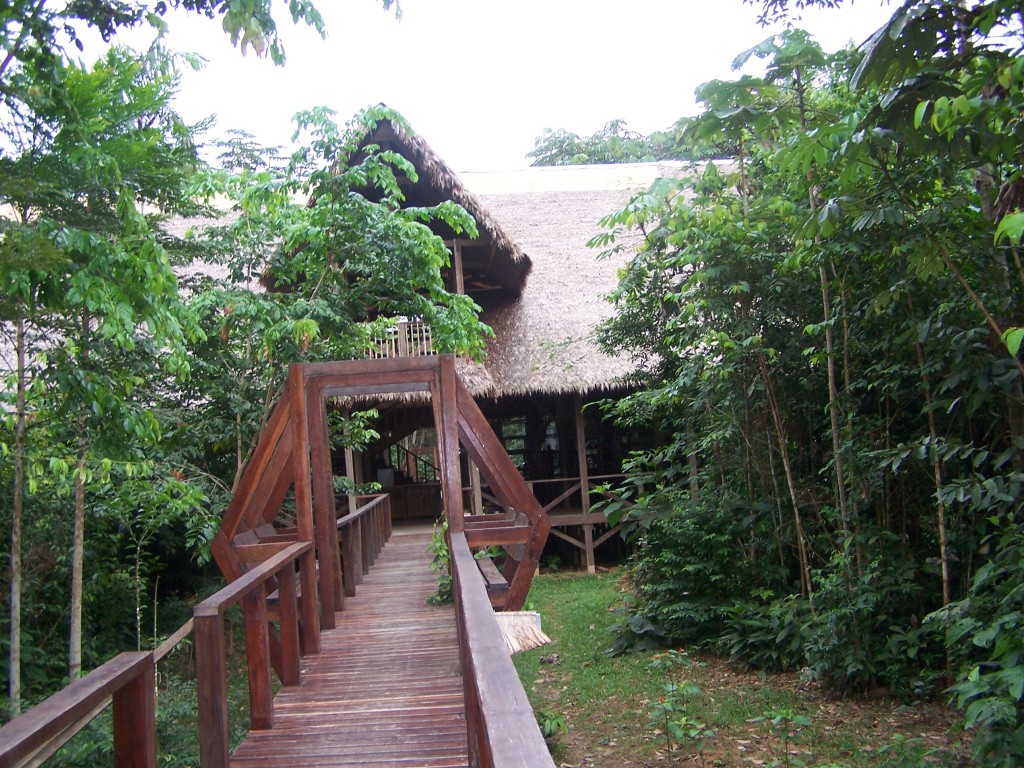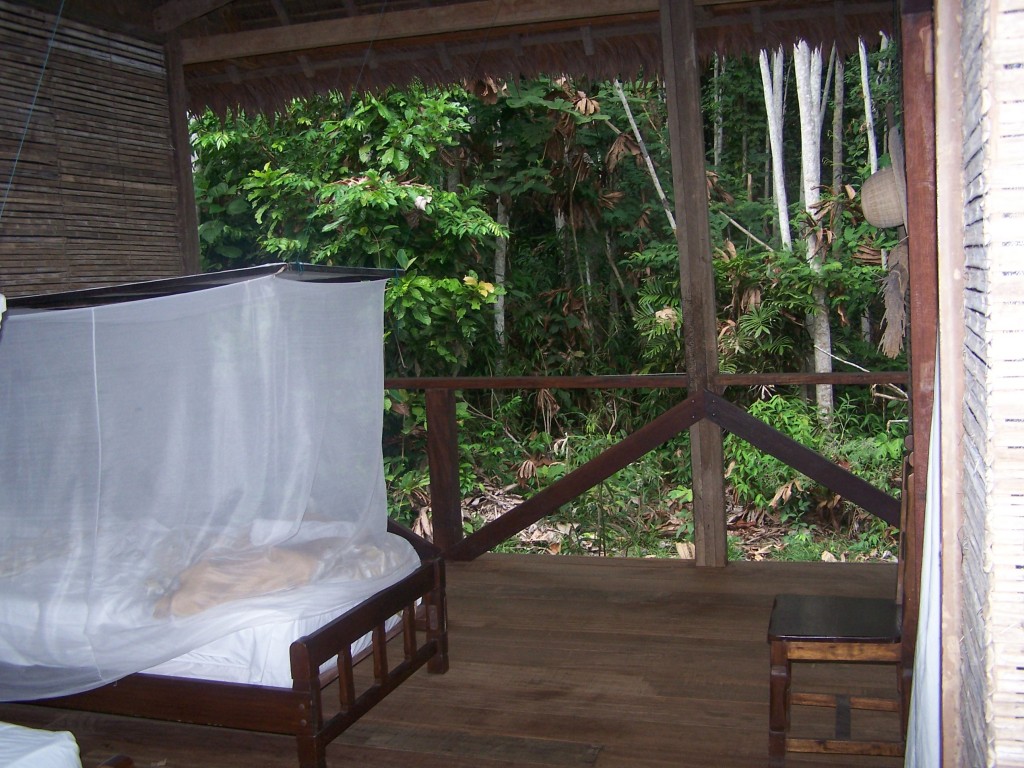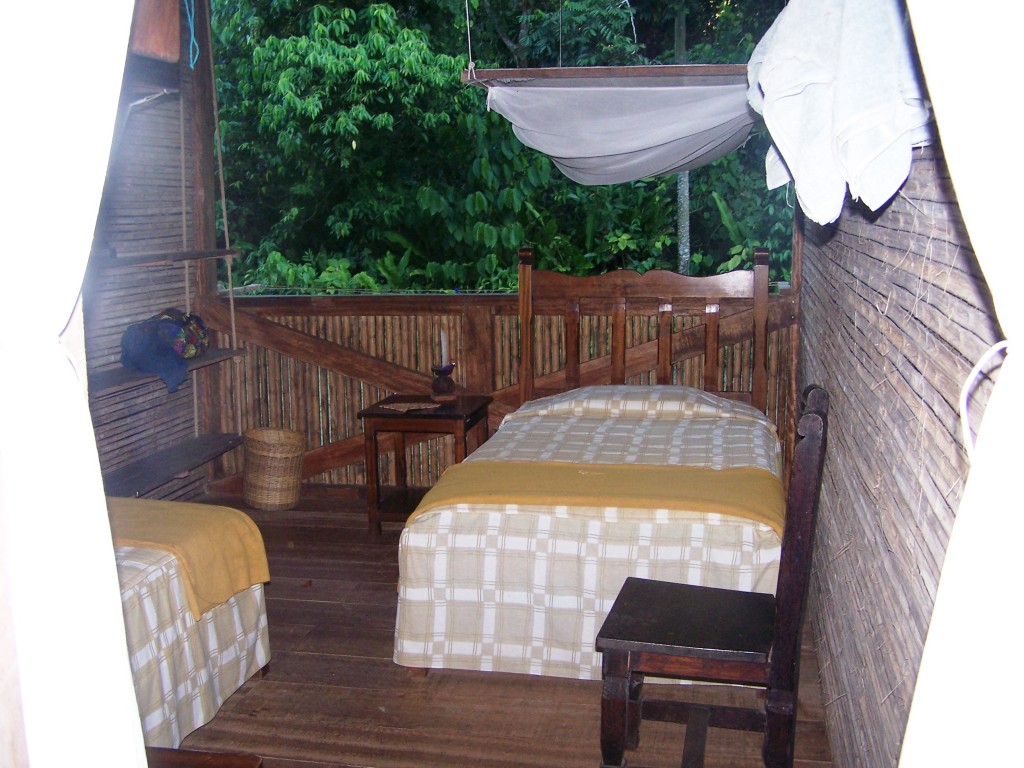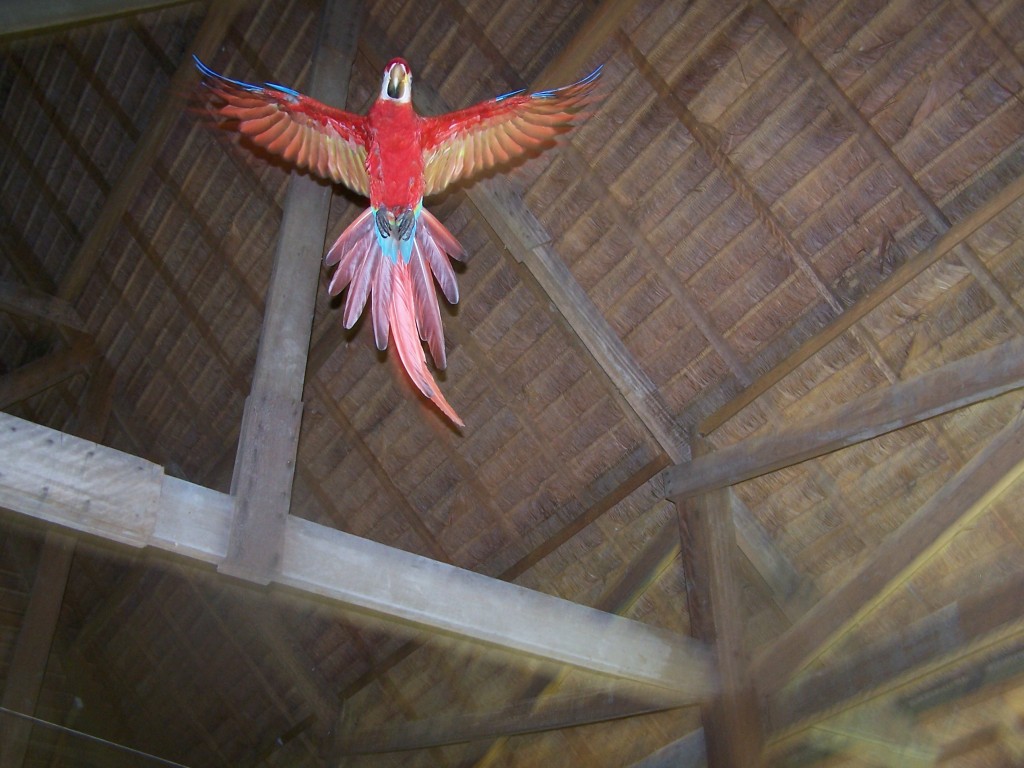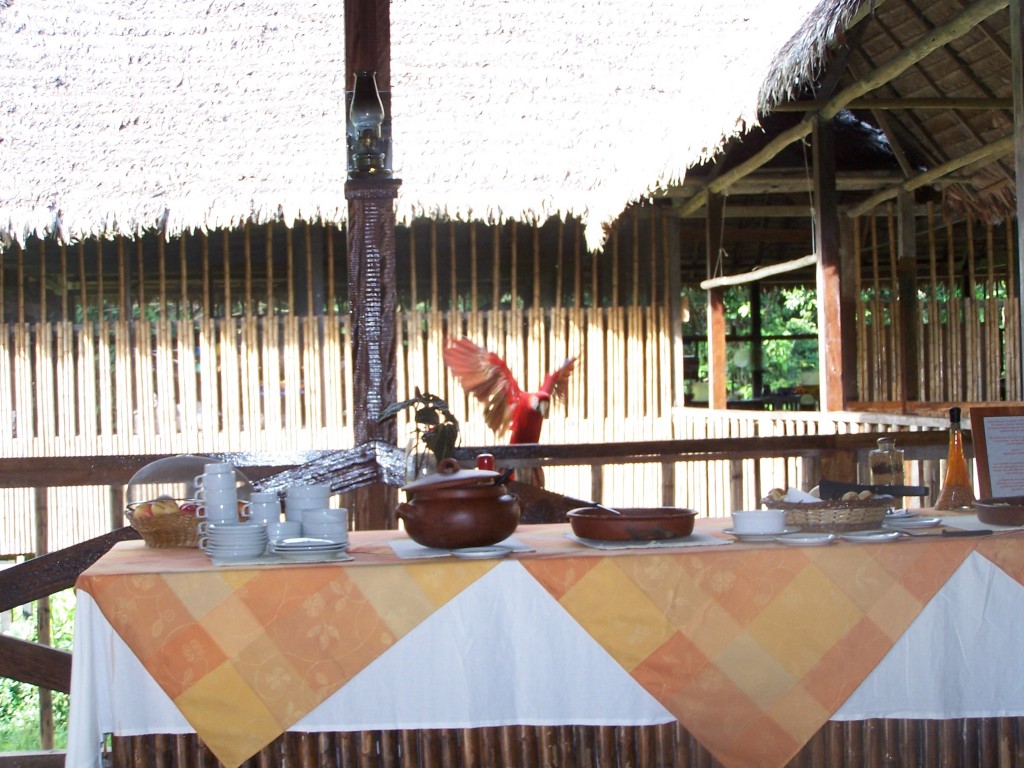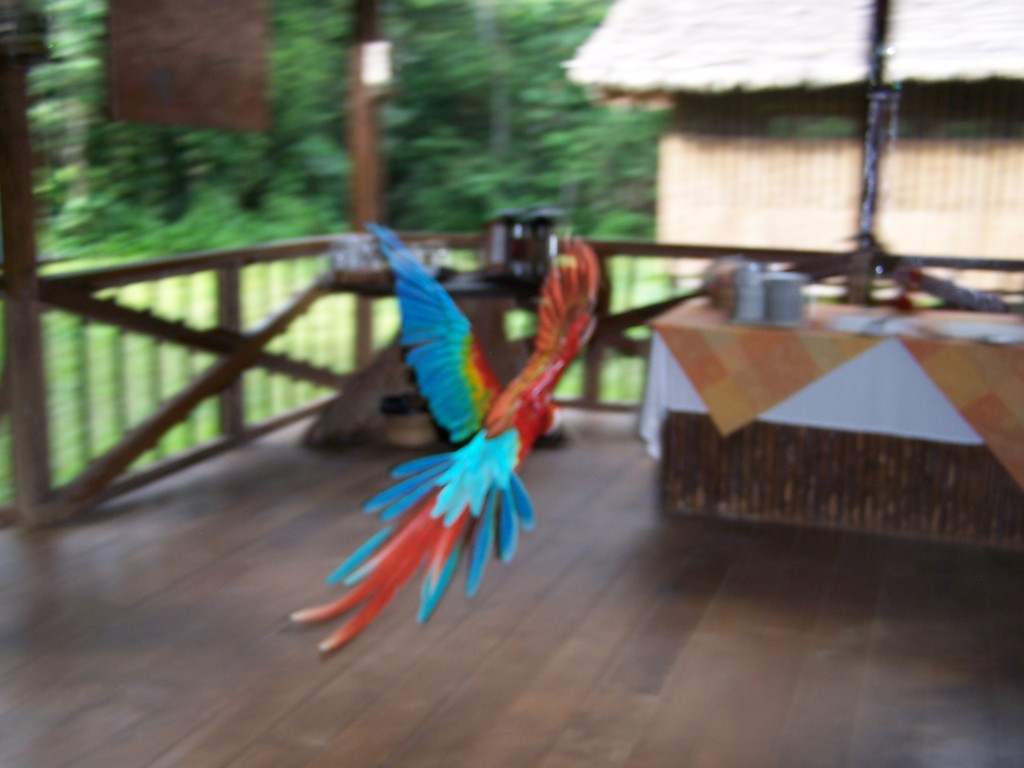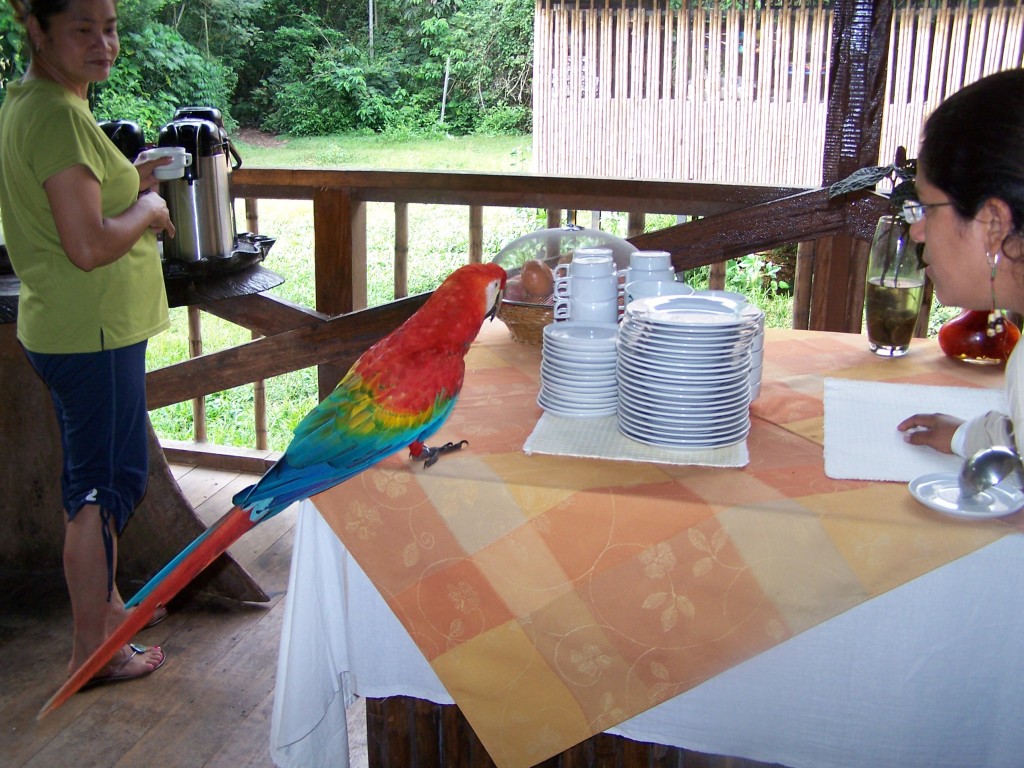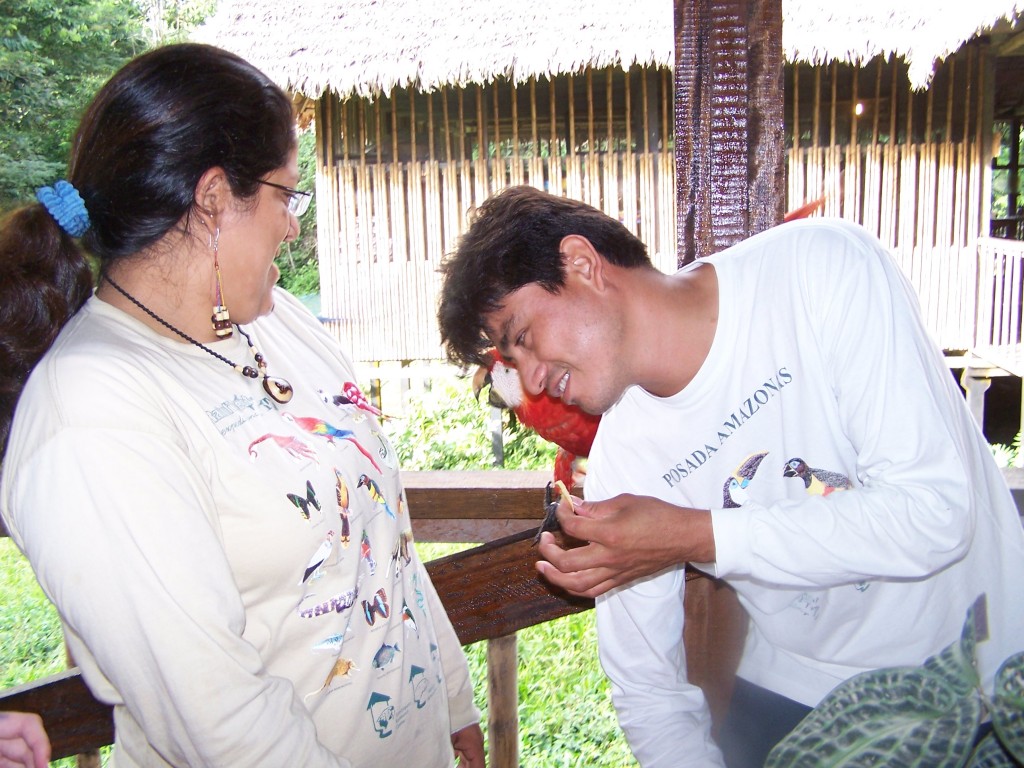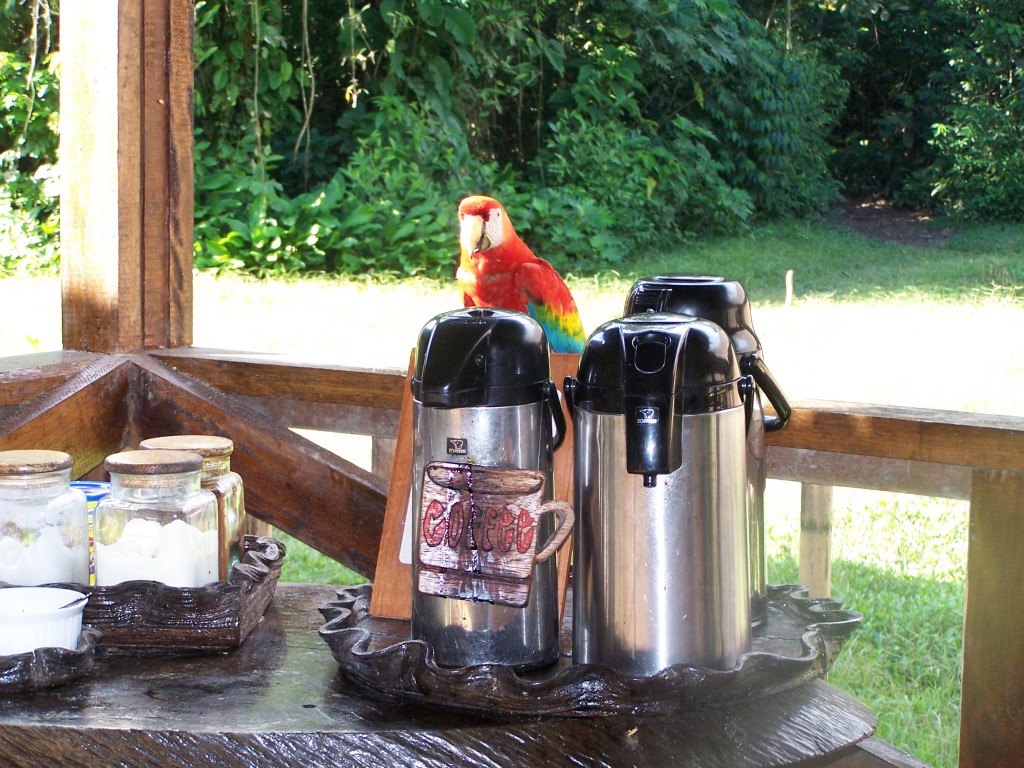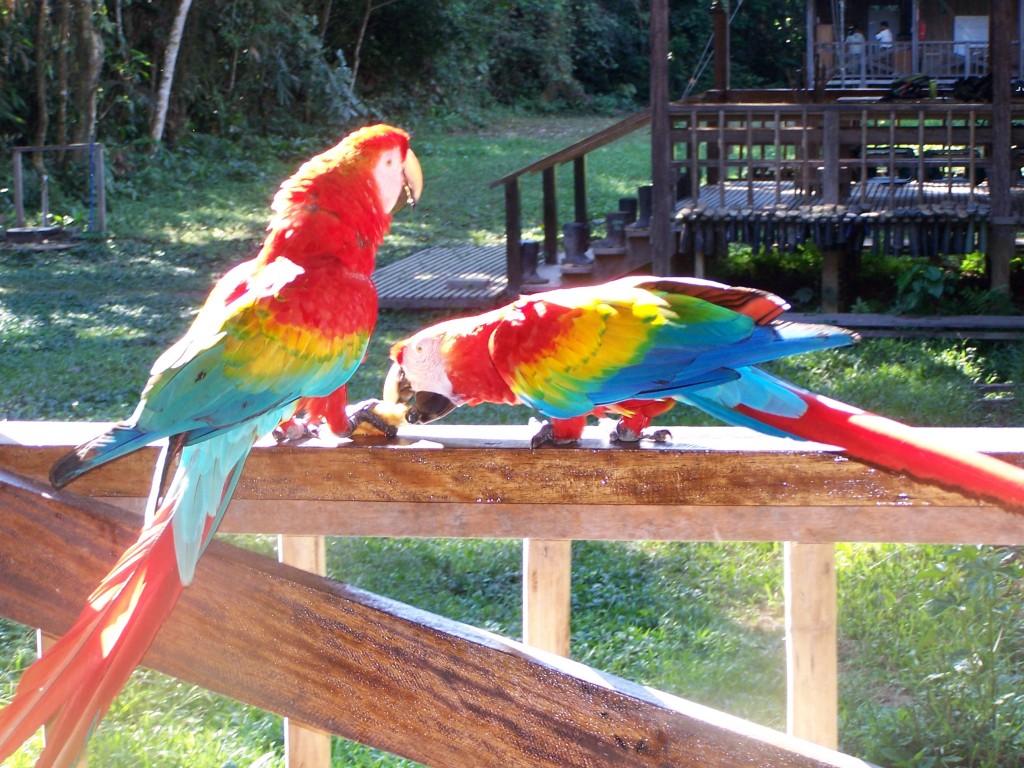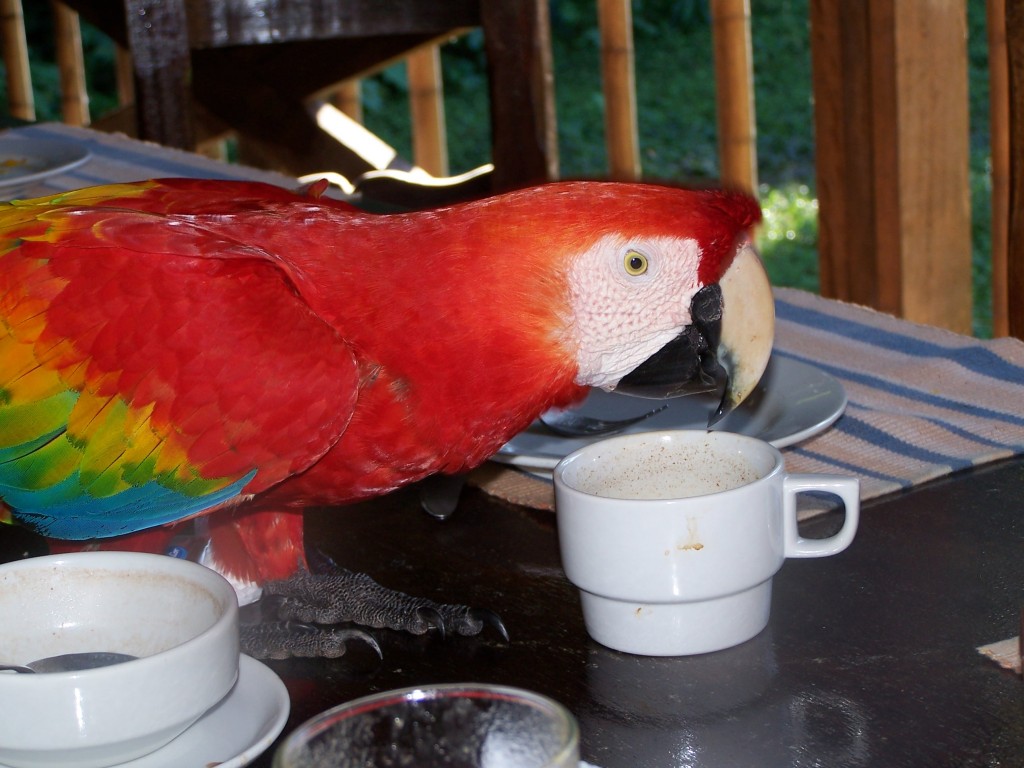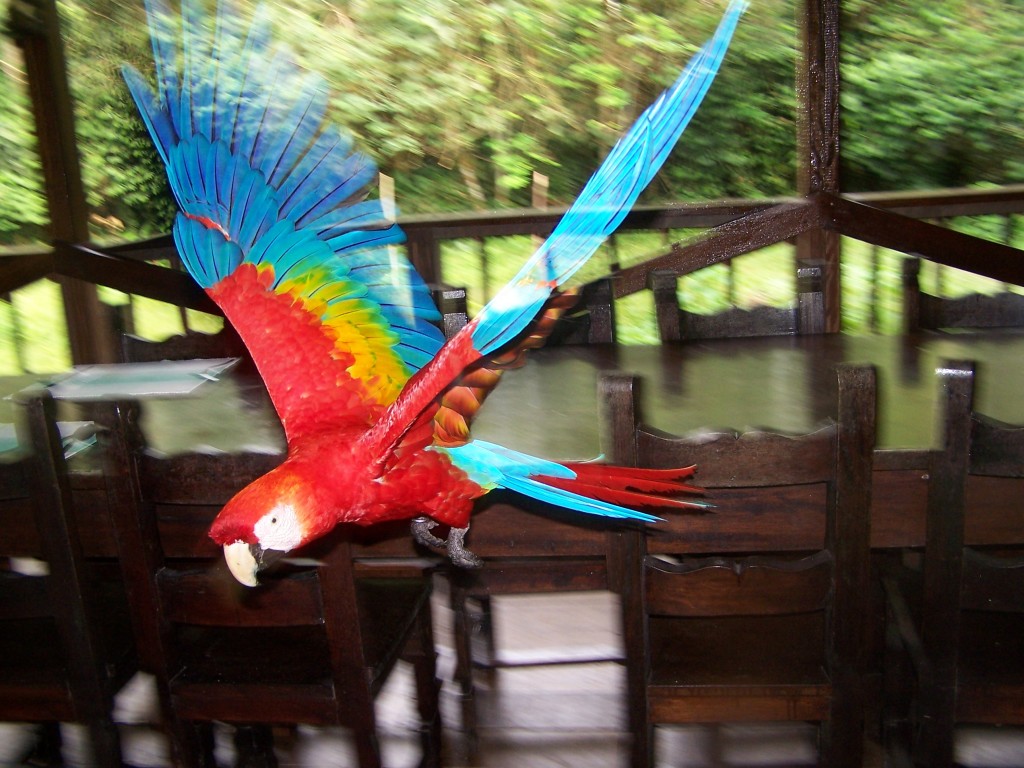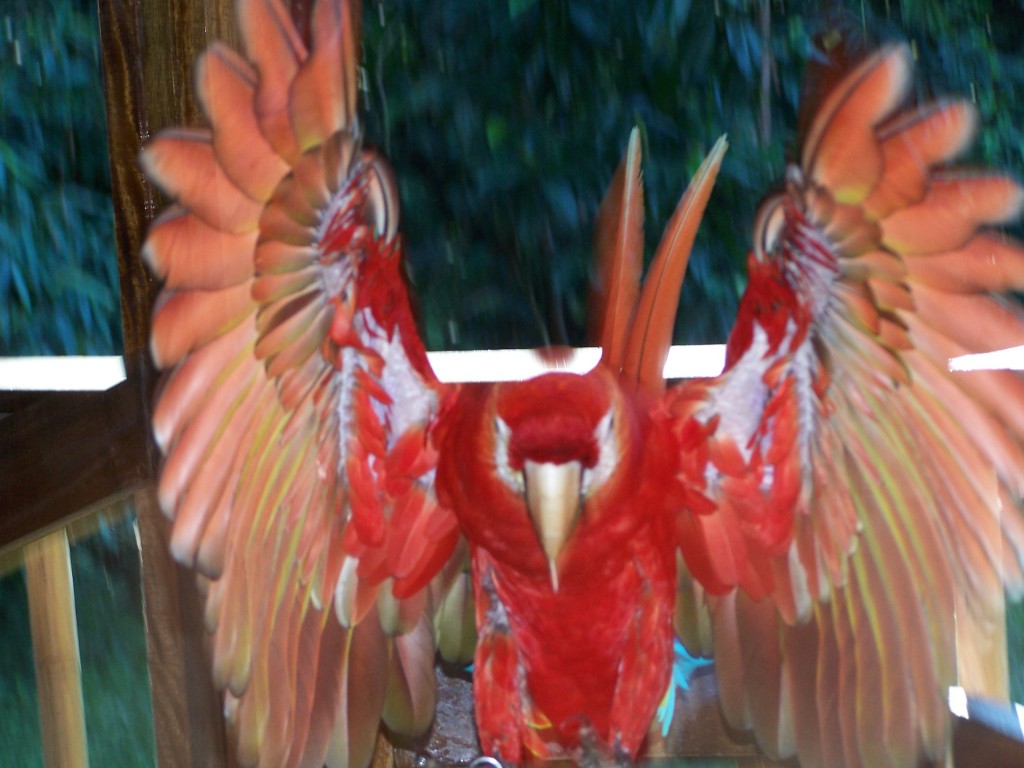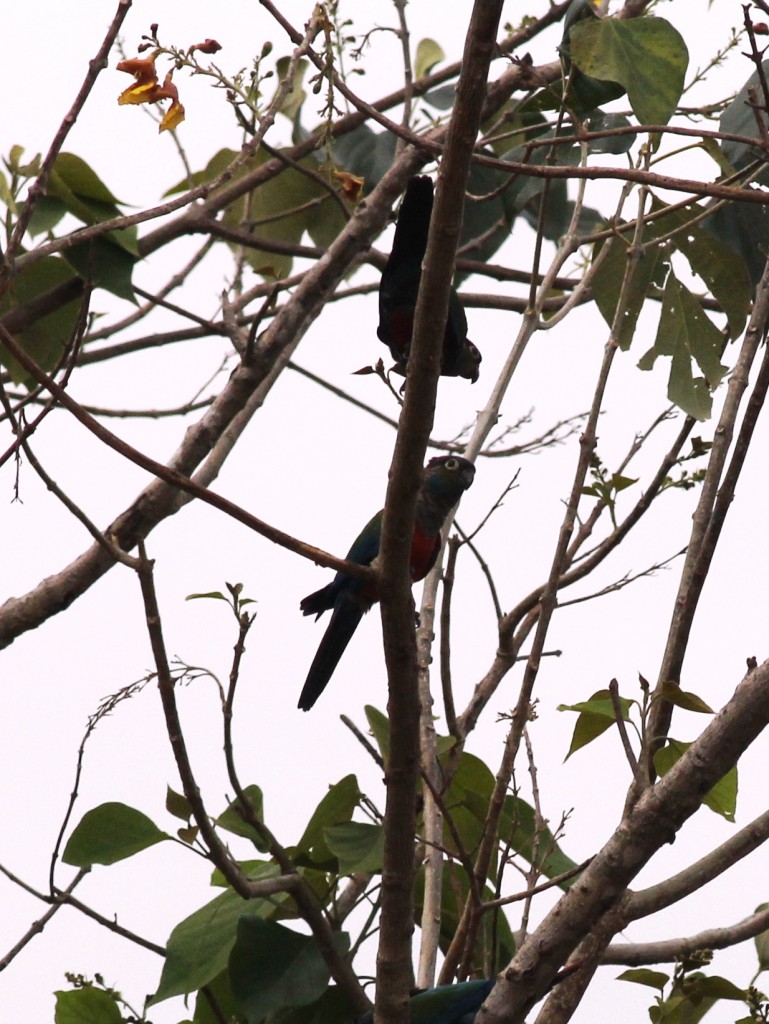When I first started this blog, I wrote a post on how to choose an eco-lodge. Looking back, I still agree with everything I said back then. But there was one element I forgot to mention until I saw this post by an award-winning travel writer and editor at large for National Geographic Traveler magazine, Mr Costas Christ. In his outstanding article, he talks about how the lodge should reflect the culture of the country its in. The Tambopata Research Centre looks like its in Peru. Selva Verde looks like its in Costa Rica. Hornbill Camp looks like its in India. And these as well as many other I have blogged about make a point of employing local people and contributing to the local economy. I could go on, but this is one very important factor that sets a fantastic eco-lodge apart from just a good eco-lodge.
Tag Archives: ecolodge
National Geographic’s Picks – World’s Best Ecolodges
Refugio Amazonas And Tambopata Research Center Lodge Reviews
Last week, I did a comprehensive post on all the lodges that are available in Tambopata National Reserve. I have only been to two lodges so in the other post, I was only able to assess the lodges by their websites and what other had said about them on Trip Advisor. Now I can give a more personal review. I am reviewing these two lodges together as they are part of the same group and if you visit Tambopata Research Center (TRC), you will have one night at either Refugio Amazonas or Posada Amazonas before and after the TRC trip because it is a LONG way down the river!
The journey to get there is half the fun and the birding begins right away! I have a full account on my main website Feathered and Free which actually reads more like a blog post so I won’t copy everything again. The service was amazing from the moment we were picked up at the airport in Puerto Maldonado, given our safety gear and leaf lunches to the nature walks and birding. Our guide, William was well trained, knew all the species and had a good eye for spotting them.
The lodges were both beautifully laid out and in harmony with the rain forest. What I really love is how the rooms are open to the jungle and you can see and hear everything that goes on 24 hours a day! Mosquito nets are provided and we found the beds very comfortable. People are warned not to leave personal effects and food out as macaws and monkeys can and will take anything they find. Meals are done buffet style and the food was excellent! We were amazed at how they could cook the variety of dishes they did out in the middle of the rainforest! There is a well-stocked bar and library where you could take a book and relax in a hammock during the siesta time.
Macaws can and do come into the rooms!
At TRC, there are several semi-tame Scarlet Macaws that were rescued from nests in cases where the parents weren’t feeding them. This often happens with a 2nd chick, the parents sometimes neglect the younger in favor of the elder one. These semi-tame macaws are called “Chicos”, and they would not be alive today if they hadn’t beed rescued and fed by researchers. Although they are totally wild and free, they have come to realize that free food is a good thing, so they usually come around at breakfast time hoping to steal as much from the buffet and people’s plates left unattended as possible. It’s quite hilarious as they are experts at faking out the lodge staff and work in teams to distract the staff while their mate swoops in to steal something!
VIDEO CLIPS!
TRC will give you a lifetime of memories and if you do stay here, the only thing you will regret is that you didn’t stay longer!
OTHER POSTS IN THIS SERIES
Choosing An Eco-Lodge
This will be a reference post I use often when analyzing the lodges in any particular area. While I will only do a REVIEW of a lodge I have actually been to, I will use other resources found online to determine the lodging options in any avian eco-tourism adventure.
There are several things to consider when choosing an eco-lodge. In some cases, you will be choosing a location because of a bird species you want to see which may have only a small range. An example of this is Crimson-bellied Conures (Pyrrhura perlata), which are only found in the central and south Amazon basin. The only eco-lodge in their habitat is Cristalino Jungle Lodge based in Alta Foresta, Brazil. So in this case, the lodge is chosen for you by the species.
In other cases such as Scarlet Macaws (Ara macao), they can be found all over South and Central America so you have many choices. Even in cases such as Tambopata National Reserve, the Pantanal, Carara National Park you will have many different lodges to choose from in the same area. So how should you choose?
CONTRIBUTION TO CONSERVATION
Is the lodge affiliated with a conservation project? Do they sponsor scientific research? Do they have an education program for foreign volunteers and local employees? Do they make an effort to be sustainable and “Green”? Do they have a program to protect wildlife from poachers? Do they train former poachers to be guides? Do they financially support any conservation causes?
LOCATION
Are they in the reserve or park, or in a town nearby? How do you get there? Can you drive in yourself? Do you have to use their transport if it is a remote location? Can you afford the transportation to get there? Are the local people actively involved with the lodge?
SPECIES OF BIRDS AND ANIMALS
Is there a bird list and animal list on their website? Which lodge reports more sightings of the species that interest you? Are the species easily found?
SIZE, ROOMS AND CLIENTELE
How large is the lodge? Is it so big that it will feel crowded? Is it too small that you worry about the level of service? Do they prepare their own meals or do you have to self-cater? Do they accept children as guests? Are you looking for opportunities to socialize or to get away from people and be with nature? Do they have separate bungalows or motel-style accommodation? Does the lodge blend in with the environment?
IN-HOUSE GUIDES
If you are not part of a pre-organized group, you will be using the in-house guides and probably put into small groups with other guests. Where do the guides come from? Who trains them? How well do they know the bird calls? Do they know the habitat well and likely places to find birds?
COST
What options of accommodation do they offer? Do they have a dorm for backpackers? Do they have family accommodation? Do they include meals? What other extras are included in the package (guided walks, boat trips, photography instruction, etc)? Are there seasonal rates? Group discounts? How do you pay? How much in advance? Do they take credit card on a secure serve? Paypal? Is the only way to pay via bank transfer (which has fees involved)? Can you use a portal such as Expedia, Hotels.com, Booking.com? What is the cancellation or rebooking policy if your plans change? Do they take credit cards for incidentals or will you have to bring cash along?
ONLINE REVIEWS
What do other people say about them on Trip Advisor, Lonely Planet, Facebook and birding sites such as Surfbirds, Fat Birder, etc? What do people like? What do they not like? Does the lodge manager communicate on social media and seems like they want people to be happy?
YOUR PRIORITIES
You are unlikely to find one lodge that has everything you want so you will have to know what is most important to you. The species you want may only be found at a small, remote lodge that is expensive to get to and stay at. You may have to take a long trip down the river in a small boat which some people may find uncomfortable. The menu may be limited at remote lodges and you may end up being the only ones there in the off-season. One lodge may be in your budget but it may be a larger one and more crowded. A lodge that accepts families may have you waking to screaming kids instead of warbling birds. You can never do too much research when it comes to choosing an eco-lodge!

